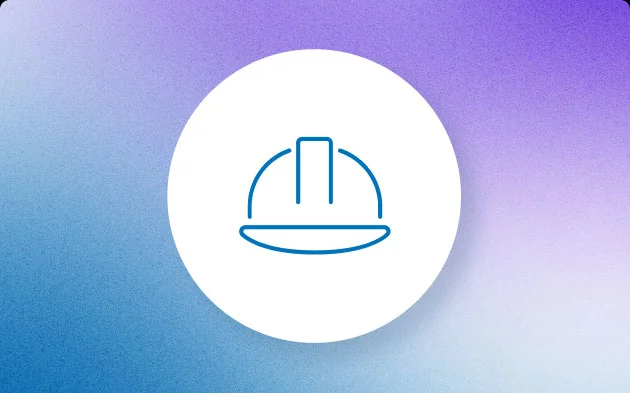Best practices for asset maintenance management
Effective asset maintenance management maximizes productivity by eliminating production halts, costly repairs, and workplace hazards, dangers, and risks.

Unforeseen downtime resulting from asset failure or malfunction can significantly impact productivity, leading to revenue loss and decreased customer satisfaction. Research reveals that over 80% of businesses experience unplanned downtime of vital assets approximately once every three years. To combat this challenge, implementing a maintenance management strategy becomes imperative. Such an approach not only ensures the smooth performance and reliability of essential facilities, equipment, vehicles, and machinery but also contributes to overall safety and customer satisfaction.
Key strategies for maintenance management optimization
The implementation of best practices in asset management is of paramount importance for organizations aiming to achieve sustainable growth and operational excellence. These strategies not only optimize resource utilization but also contribute significantly to overall productivity and profitability. Here are some of them:
- Regular maintenance: Sustaining optimal asset performance requires consistent upkeep to prevent wear and tear. Routine maintenance conducted at regular intervals is pivotal for maintaining sustained productivity and efficiency. This proactive approach not only extends the lifespan of assets but also minimizes downtime, reduces the likelihood of costly breakdowns, and ensures that assets operate within their intended parameters. By adhering to a well-defined maintenance schedule, organizations can identify and address potential issues before they escalate, resulting in smoother operations and improved reliability.
- Employee training: Keeping employees well-informed about asset components, new features, integrations, and enhancements is essential for safe and efficient resource utilization, ultimately leading to improved productivity. Regular training sessions empower employees with the knowledge and skills needed to operate and maintain assets effectively, reducing the risk of human errors and accidents. In addition to technical training, organizations should also provide guidance on best practices, safety protocols, and troubleshooting techniques, fostering a culture of responsibility and ownership among employees. Well-trained personnel can not only optimize asset performance but also contribute valuable insights for continuous improvement.
- Harnessing data: Data serves as a valuable resource for gaining insights into asset conditions, enabling informed decisions regarding component replacement, repairs, or enhancements. Implementing a robust data collection and analysis strategy allows organizations to monitor asset health in real-time, detect anomalies, and predict potential failures. By utilizing advanced sensors, IoT technologies, and predictive analytics, organizations can transition from reactive to proactive maintenance strategies. Analyzing historical data helps identify patterns, usage trends, and maintenance requirements, leading to optimized resource allocation and cost-effective decision-making.
- Automation of maintenance: Leveraging maintenance automation software streamlines scheduling, generates checklists for each asset, and sends alerts to relevant teams. This software aids in managing maintenance activities across multiple locations, offering historical data access that assists in identifying maintenance patterns and trends. Automation not only reduces administrative overhead but also ensures consistency in maintenance procedures, adherence to schedules, and compliance with regulatory standards. Furthermore, automation allows maintenance teams to focus on strategic tasks and problem-solving, improving overall operational efficiency.
- Comprehensive asset inventory: Maintaining an accurate inventory of corporate assets is crucial for effective maintenance management. It facilitates minimal production disruption during maintenance, efficient assignment of work orders, and informed decisions regarding asset replacement and utilization. An up-to-date asset inventory includes essential details such as asset specifications, maintenance history, warranty information, and associated documentation. This centralized repository enables quick access to information, simplifies auditing and compliance processes, and supports data-driven decision-making. Moreover, an organized asset inventory forms the foundation for lifecycle planning, budgeting, and strategic asset management, aligning maintenance efforts with business goals.
Enhancing asset management through CMMS
Computerized Maintenance Management Software (CMMS) is designed to help organizations manage and maintain their assets, equipment, and facilities more efficiently. It provides tools and functionalities for tracking and scheduling maintenance tasks, managing work orders, monitoring equipment health, and generating reports on maintenance activities. A powerful tool for optimizing enterprise asset maintenance, CMMS can:
- Provide a centralized database: Cloud-based CMMS stores all asset information, enabling technicians and administrators to access it from anywhere, fostering a comprehensive view of assets.
- Visualize asset relationships: Understanding asset dependencies is vital for businesses of all sizes. Asset hierarchies within the CMMS establish connections between equipment, subassemblies, and components, enhancing maintenance team efficiency.
- Maintain detailed records: Automated maintenance history, based on user manuals and records, facilitates easy evaluation. CMMS streamlines the maintenance and updates of asset information, including specifications, manufacturers, locations, and more. It also enables reporting of key metrics such as MTTR, OEE, and MTBF.
Eagle CMMS: Simplifying asset maintenance across industries
Eagle CMMS, a leading technology provider, is dedicated to enhancing facility maintenance quality through cutting-edge solutions and services. Our offerings encompass data migration, automated data validation, and seamless integration with other CMMS and ERP applications. Additionally, we conduct audits and evaluations, offering improvement suggestions and solutions for critical concerns. Our comprehensive services include training and support to ensure your staff efficiently manages maintenance data. With Eagle CMMS, you experience higher productivity, reduced operational expenses, and minimized downtime.Schedule a demo today to learn how our solutions can transform your maintenance practices.












